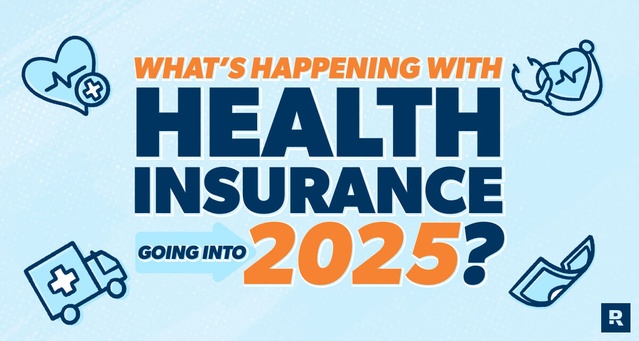Health insurance in the USA is a lifeline for millions, but it’s also a complex and often costly system. As we move through 2025, the landscape is shifting with rising premiums, expiring subsidies, and bold reforms on the horizon. Whether you’re insured through your employer, the Affordable Care Act (ACA) marketplace, or Medicaid, the changes coming in 2025—and their ripple effects into 2026—will hit your wallet and your coverage. So, what’s driving these changes, and how can you prepare?
In this 2,500-word blog post, we’ll unpack the state of health insurance in 2025, diving into costs, coverage trends, and reforms shaping the future. With real-life stories, expert insights, and data from trusted sources like KFF and the Commonwealth Fund, we’ll make sense of it all in a conversational, humanized way. Let’s explore what’s happening and how you can navigate the road ahead.
Why Health Insurance Matters in 2025
Health insurance is your safety net against medical emergencies that can drain your savings. A single hospital stay can cost tens of thousands of dollars, and without coverage, chronic conditions like diabetes or cancer can become financial nightmares. In 2025, over 300 million Americans have some form of health insurance, with the uninsured rate at a historic low of 7.9% in 2023, thanks to the ACA. But challenges like rising costs and expiring subsidies threaten to reverse these gains.
Take Maria, a 42-year-old freelance writer from Georgia. When she was diagnosed with breast cancer in 2024, her ACA marketplace plan covered most of her treatment. “Without insurance, I’d be bankrupt,” she says. “But my premium went up 10% this year, and I’m worried about next year’s hike.” Maria’s story reflects a broader reality: health insurance is essential, but affordability remains a hurdle.
The Cost of Health Insurance in 2025
Health insurance costs are climbing, outpacing inflation and wage growth. Let’s break down the numbers and what’s driving them.
Marketplace Plans: ACA Costs and Subsidies
For those buying insurance through HealthCare.gov, the average annual cost for an ACA marketplace plan in 2025 is $7,080, or about $590 per month, according to Forbes Advisor. Costs vary by plan tier:
- Bronze: $495/month (cheapest, high deductibles)
- Silver: $618/month (balanced coverage)
- Gold: $655/month (lower deductibles, higher premiums)
- Platinum: $1,166/month (most comprehensive, priciest)
These are unsubsidized rates, but 92% of ACA enrollees receive premium tax credits or cost-sharing subsidies based on income. For example, a young professional earning $30,000 a year might pay as little as $50/month for a Silver plan, thanks to enhanced subsidies from the Inflation Reduction Act (IRA) of 2022.
However, these subsidies are set to expire at the end of 2025, and experts warn of a “sharp” premium spike in 2026. KFF estimates that without an extension, premiums could rise by 75% on average, with a typical couple earning $42,000 facing a $1,550 annual increase. The Congressional Budget Office projects 4 million people could lose coverage if subsidies lapse.
Employer-Sponsored Plans: A Growing Burden
About 165 million Americans get coverage through employer-sponsored plans, which cost $35,119 annually for a family of four and $7,871 for an individual in 2025, per the Milliman Medical Index. That’s a 6.7% increase from 2024, driven by higher medical service costs and demand for pricey treatments like GLP-1 weight loss drugs. Employers cover 58% of these costs, employees pay 27% through payroll contributions, and the rest comes from out-of-pocket expenses like copays.
For Sarah, a 35-year-old teacher in Ohio, her employer plan’s deductible jumped to $3,000 in 2025. “I’m paying more each month, and I still have to cover doctor visits out of pocket until I hit the deductible,” she says. Mercer reports that 51% of large employers plan to shift more costs to workers in 2025 through higher deductibles or out-of-pocket maximums.

Medicaid and the Coverage Gap
Medicaid covers 72 million Americans, but 10 states, mostly in the South, haven’t expanded eligibility under the ACA, leaving 1.5 million low-income adults uninsured. Alton Fry, a 54-year-old contractor from Georgia, earns too much for his state’s limited Medicaid but can’t afford ACA plans. After a prostate cancer diagnosis, he’s relying on crowdfunding to cover treatment. “There’s no help for people like me,” he says. Health insurance in the USA
Coverage Trends in 2025
Coverage options are evolving, with new technologies and consumer demands shaping the market. Here’s what’s trending.
Record ACA Enrollment
The ACA marketplace hit a record 24.2 million enrollees in 2025, up from 11 million in 2020, driven by enhanced subsidies. “The subsidies made insurance affordable for millions,” says Cynthia Cox of KFF. “But if they expire, we’ll see a reversal.” Southern states like Texas and Florida have seen massive enrollment growth, but these areas are also at risk if subsidies end.
Rise of Telehealth and Preventive Care
Telehealth is booming, with virtual care programs saving costs for both insurers and patients. A 2025 study found that at-home virtual care could save millions, though reimbursement reforms are needed. Preventive care, like screenings for hypertension, is also gaining traction to reduce long-term costs. Expanding screening guidelines could boost health equity, especially for underserved communities.
High-Deductible Plans and HSAs
High-deductible health plans (HDHPs) are increasingly popular, paired with Health Savings Accounts (HSAs). In 2025, individuals can contribute up to $4,300 to an HSA, with an extra $1,000 for those 55 and older. “HSAs are a game-changer for managing costs,” says financial advisor Emily Chen. “You save pre-tax dollars for medical expenses, which lowers your taxable income.”
Reforms and Policy Changes in 2025
The health insurance landscape is shaped by policy debates, with 2025 marking a critical year for reforms.
The Subsidy Cliff: Will Congress Act?
The enhanced premium tax credits, extended through 2025 by the IRA, have been a lifeline for ACA enrollees. Without Congressional action, premiums could spike by $387 for low-income enrollees and up to $3,000 for those earning $60,240 or more. “Congress must extend these subsidies,” urges HHS Secretary Xavier Becerra. “Inaction could mean 5 million people lose coverage.”
However, political gridlock makes an extension uncertain. Posts on X highlight the divide, with some lawmakers calling for ACA support and others arguing subsidies fuel rising premiums.
Medicaid Work Requirements and Coverage Losses
The “One Big Beautiful Bill” signed by President Trump in 2025 introduces work-or-school requirements for Medicaid, potentially affecting 12 million low-income adults by 2034. The bill also ends automatic ACA enrollment renewals, requiring annual income updates, which could lead to coverage gaps due to administrative errors. Health insurance in the USA
Streamlining Prior Authorization
A significant reform in 2025, announced by RFK Jr., aims to streamline prior authorization processes, reducing delays in patient care. “This is a monumental accomplishment,” RFK Jr. said on X, noting it could save time and money for 260 million insured Americans. The reform minimizes administrative burdens for providers, allowing faster access to treatments.
Site-Neutral Payment Reforms
To curb costs, policymakers are pushing site-neutral payment reforms, aligning reimbursement rates for services across settings like hospitals and physician offices. A 2023 House bill (HR 5378) could save $3.7 billion over 10 years by aligning drug payment rates. This could reduce hospital consolidation and lower commercial prices, but hospitals argue they need higher rates for complex care.
Challenges Facing the System
Despite progress, the U.S. health insurance system faces persistent challenges.
Market Concentration
The GAO reports that health insurance markets are increasingly concentrated, with fewer insurers dominating. In 2022, 47 states had concentrated small-employer markets, reducing competition and driving up premiums. Mergers and acquisitions, like those involving UnitedHealthcare, have sparked outrage over profit-driven practices that delay or deny care.
Medical Debt and Underinsurance
Even with coverage, 23% of working-age adults are underinsured, facing high deductibles that make care unaffordable. The Commonwealth Fund found that many skip medications or specialist visits due to costs, leading to worse health outcomes. Medical debt remains a burden, with billing errors and coverage denials adding to the problem.
Disparities in Access
Racial and income disparities persist, particularly in non-expansion states. Black and Latino communities face higher uninsured rates, and attacks on ACA protections could worsen inequities. Expanding Medicaid in the 10 holdout states could cover 1.5 million people, but political resistance remains strong.
How to Navigate Health Insurance in 2025
With costs rising and reforms unfolding, here are practical tips to manage your health insurance.
Shop Smart During Open Enrollment
Open enrollment for ACA plans runs from November 1 to January 15. Compare plans on HealthCare.gov or state marketplaces like California’s. Check plan formularies to ensure your medications are covered. “Don’t just auto-renew,” advises insurance broker Lisa Patel. “A few minutes of comparison can save hundreds.”
Maximize Subsidies and HSAs
Apply for premium tax credits if your income is below 400% of the federal poverty level ($103,280 for a family of three). If you have an HDHP, contribute to an HSA to cover deductibles and copays tax-free. Health insurance in the USA
Understand Your Plan
Read your plan’s details to avoid surprise bills. Know your deductible, out-of-pocket maximum, and covered services. For example, preventive care like screenings is often free under ACA plans.
Advocate for Coverage
If a claim is denied, appeal it. The Commonwealth Fund notes that coverage denials are common but often reversible with persistence. Keep records of all communications with your insurer.
The Road Ahead: What’s Next for Health Insurance?
The health insurance landscape in 2025 is a mix of progress and uncertainty. Record ACA enrollment and reforms like prior authorization streamlining are wins, but expiring subsidies and Medicaid restrictions threaten coverage for millions. Costs continue to outpace wages, and market concentration raises concerns about affordability and choice.
For individuals like Maria and Alton, staying insured requires vigilance—comparing plans, leveraging subsidies, and understanding coverage details. As Joseph Betancourt of the Commonwealth Fund says, “Building an equitable health system takes courage to challenge entrenched interests.” Whether Congress extends subsidies or addresses the Medicaid gap will shape the future.
In 2025, take control of your health insurance by staying informed and proactive. With the right plan, you can protect your health and your finances, no matter what changes lie ahead.



